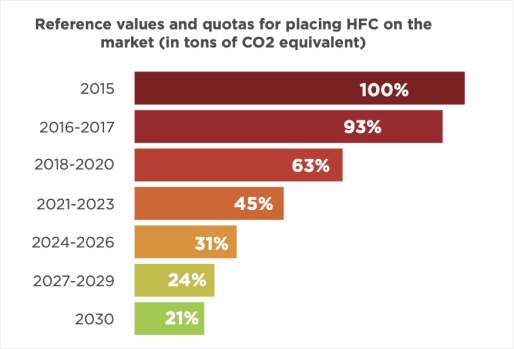With refrigerant transition, flammability, and energy standards to consider, there's a lot to think about - and the rules are always changing. Here are just a few of the areas where Lennox can help.

Many of the refrigerants used in HVAC systems are greenhouse gases – often hundreds of times more powerful than CO2. So they’re subject to increasing limits and regulation, based on the global warming potential (GWP) of each refrigerant. Practically, these “F-Gas” rules affect your system in several ways, such as:

Bans on some uses of high-GWP refrigerants
Inspection and leak detection requirements
Advancing quotas based on GWP level, limiting refrigerant supply

CO2e means “carbon dioxide equivalent”. Where a refrigerant’s GWP measures its climate impact compared to the same amount of CO2, your CO2e is the total potential impact of all the refrigerant in your system – so it’s the refrigerant’s GWP multiplied by its charge.
This is important for two reasons:
A growing number of countries are introducing taxes based on CO2e
Your CO2e determines your inspection and leak detection arrangements.

Many of the modern, low-GWP refrigerants used in today’s HVAC systems – such as R32 – have a flammability classification of A2L. This means they’re mildly flammable, but have a low burning velocity.
With the precautions outlined in the Pressure Equipment Directive (PED), these refrigerants are very safe to use. The directive gives guidance on:
Refrigerant charge limits
System design and use
Location and ventilation

Our dedicated Lennox specialists are here to help you:
Stay ahead of changing guidelines and laws
Choose the right refrigerant for your needs
Design a safe and compliant A2L system
Reduce GWP, charge level, and CO2e
Implement your leak detection and inspection regime